Gardens
Container Gardening
Not everyone has land to cultivate a garden in the ground. When space is scarce or if the ground is rocky, polluted or otherwise undesirable, you can use pots to grow many plants.
You can put plants in almost anything that is waterproof, but be sure to punch a few holes at the bottom of the container for drainage
Here are some shots of the various containers I have:
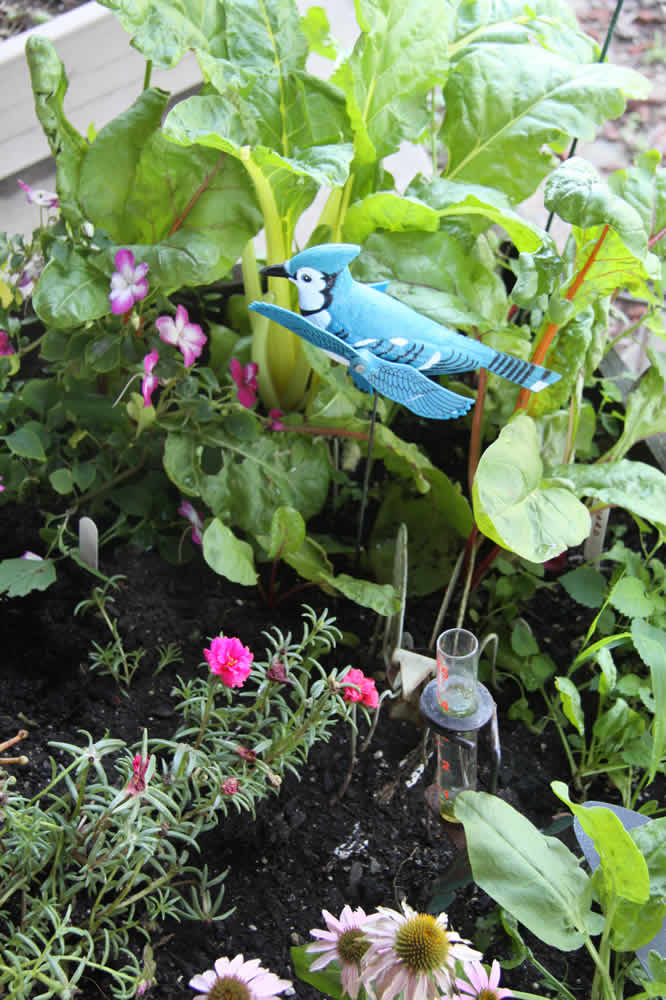 Kale, moss roses, sorrel and echinacea in a half whiskey barrel, 2011
Kale, moss roses, sorrel and echinacea in a half whiskey barrel, 2011
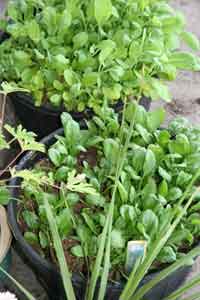 Lettuce in whiskey barrels
Lettuce in whiskey barrels
Random plants, June 2010
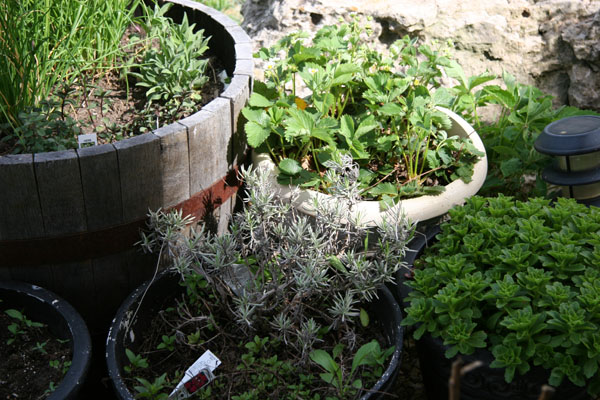 Strawberries, sage, lettuce and chives
Strawberries, sage, lettuce and chives
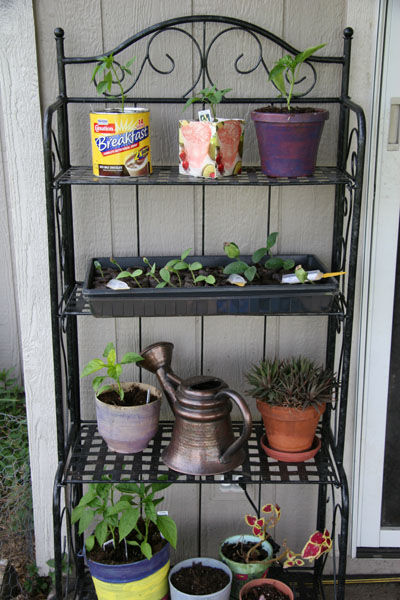
Kansas containers, mid-May. Peppers, lettuce, spinach, strawberries are thriving.
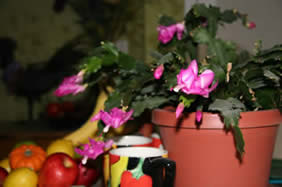
Our Christmas Cactus has bloomed inside twice a year for the past eight years

This was taken off the back porch of our Flagstaff, Arizona house. The plants that did the best in pots were peppers, okra, cherry tomatoes and squash. The crooked neck squash plant in the light-colored pot on the right spilled over onto the ground and we had to walk around it. Note the “walls of water” around the base of the tomato plants to keep them warm. We bought green ones, but they are now marketed as “Red Tomato Tepees.” You can purchase these through Gardeners’ Supply at http://www.gardeners.com/Red+Tomato+Teepees/VegetableGardening_TerrificTomatoes,34-952,default,cp.html
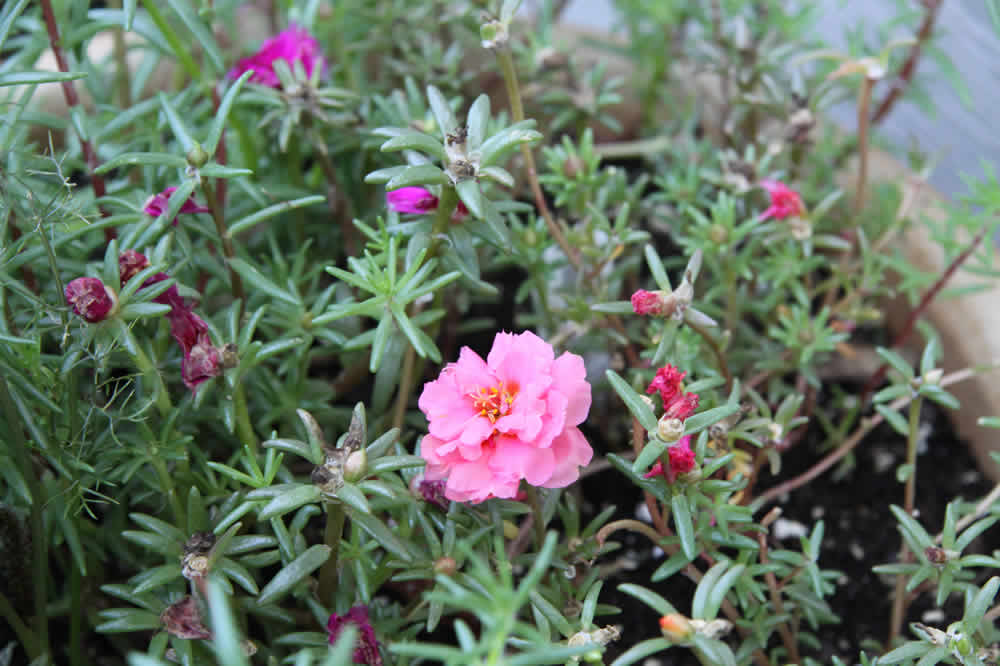
Moss roses in front porch pot.
“Pot gardening” conserves water and adding nutrients is easier; makes it easy to spot and pull weeds; moles, gophers and other annoying pests cannot dig into the pots; you can arrange the garden in whatever ways you want and according to the sunlight availability as the plants grow; you can move the pots from outside to inside in case of cold weather, hail, etc.
You will need:
A spade (a cheap one from a discount store) or a large, heavy spoon that won’t bend. Light gloves to protect your nails and skin. Plastic pots, five gallon paint buckets (cleaned, of course), or whisky barrels. The latter will fall apart after about five-seven years, however. Get your children into the activity by allowing them to paint the containers with waterproof paints. Small pebbles to add to the bottom of pots before adding the plant and soil (you can find them in your yard, by a creek or you can buy a small bag of them).

If you’re indoors, buy the “saucers” that the pots sit in so water won’t drain all over your carpet or wood. Unless you know you have fertile soil (that is also free of bugs and parasites), purchase a light potting soil. Drill three-five holes in the bottom of the pots that have no drainage holes. Most plants require a five gallon container. Squash, cucumbers, pole/climbing beans need a half barrel. Decide what plants you want to grow. I have grown peppers, eggplant, tomatoes, and many herbs in pots: mint, parsley, bay, basil, oregano. It is difficult to grow root vegetables such as potatoes, and squash, zucchini and melons require much space and water. A half whiskey barrel might work with squash, cucumbers, gourds and melons, although their “arms” will spill out.
To Plant:
Buy plants or seeds. Since Flagstaff has a short growing season, I preferred to buy plants that are already 3-5 inches high. If you live in a cooler climate, consider this option. Sunflowers and beans are an exception (I cover them with a tarp to keep them warm.). In warmer climates you can plant seeds after the danger of frost is over. I have had luck planting watermelons, pole beans and radishes by seed. Go to a nursery and buy enough plants so that you have one plant per five gallon container. Put newspaper under your pot so you don’t make a mess. Then put pebbles in the bottom of the pots and add soil to cover the pebbles. Gently remove the plant from its container. Place the plant in the middle of the dirt and gently spoon soil around the root ball. Don’t pack the soil; drop it in so the soil is two inches from the top of the pot. Water gently; don’t use the garden hose unless it is turned low. A watering pail with a sprinkler end to the spout works best. Intersperse your vegetable and herb pots with colorful flowers for a beautiful décor.
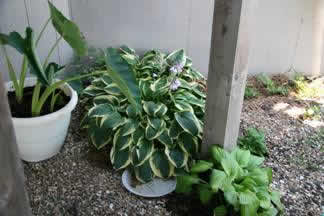
You also can grow decorative plants like hostas and elephant ears in pots. The latter need very large pots, however. Note the plastic water pan we put out for frogs and toads.
Helpful sites for container gardening:
Cornell Cooperative Extension: http://counties.cce.cornell.edu/suffolk/grownet/vegetable-garden/vegcontn.htm

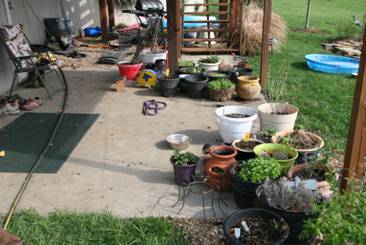
My back porch containers don’t look too great at the end of April. At this time of the season everything is pretty much a mess. On the left the lettuce, spinach and kale is starting to emerge and the strawberries I transplanted from the yard at the end of March are thriving. I’ll post pictures each week to chronicle their progress.
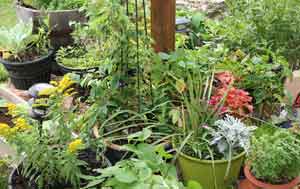
The result a few months later. June 2008.